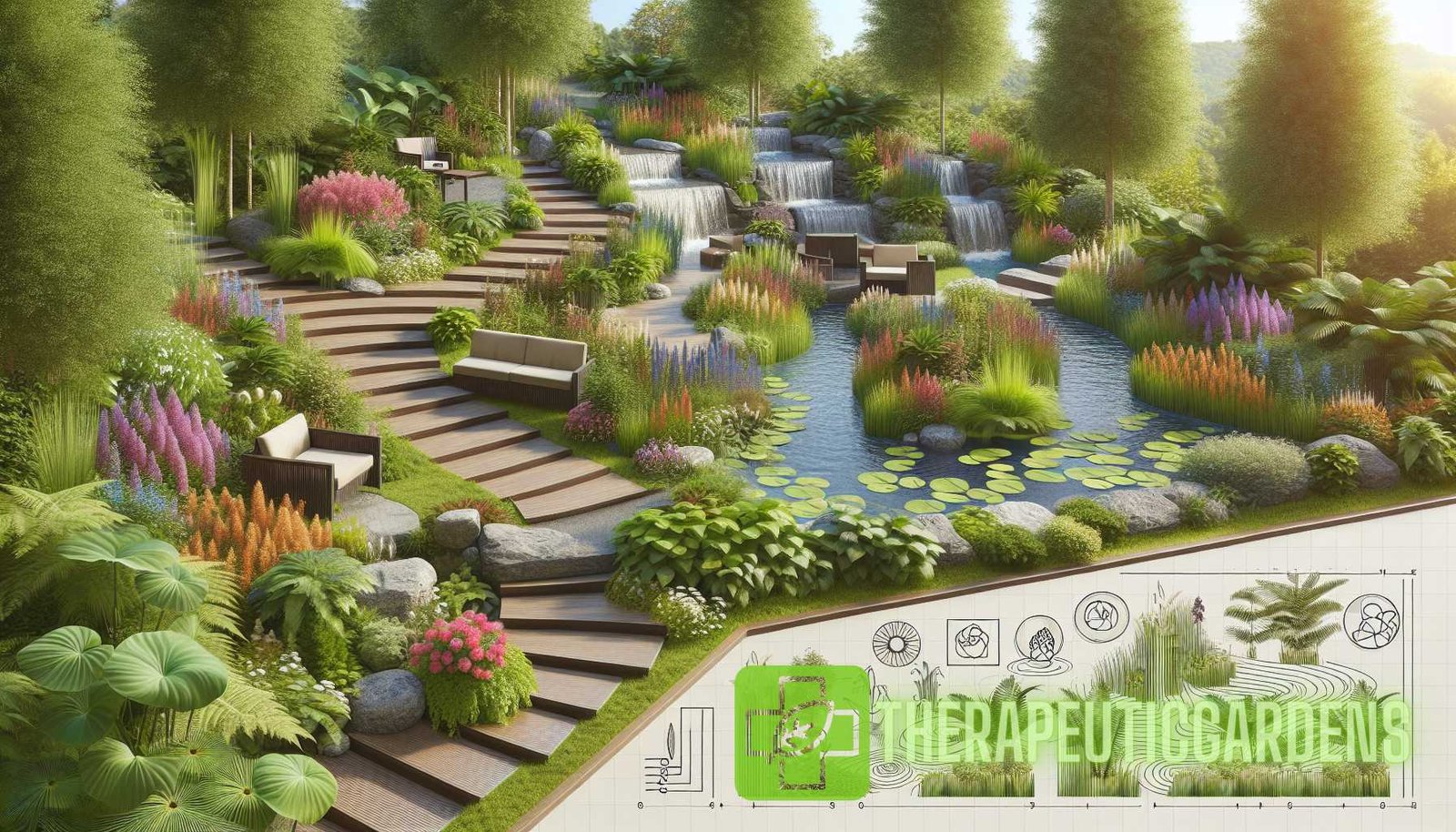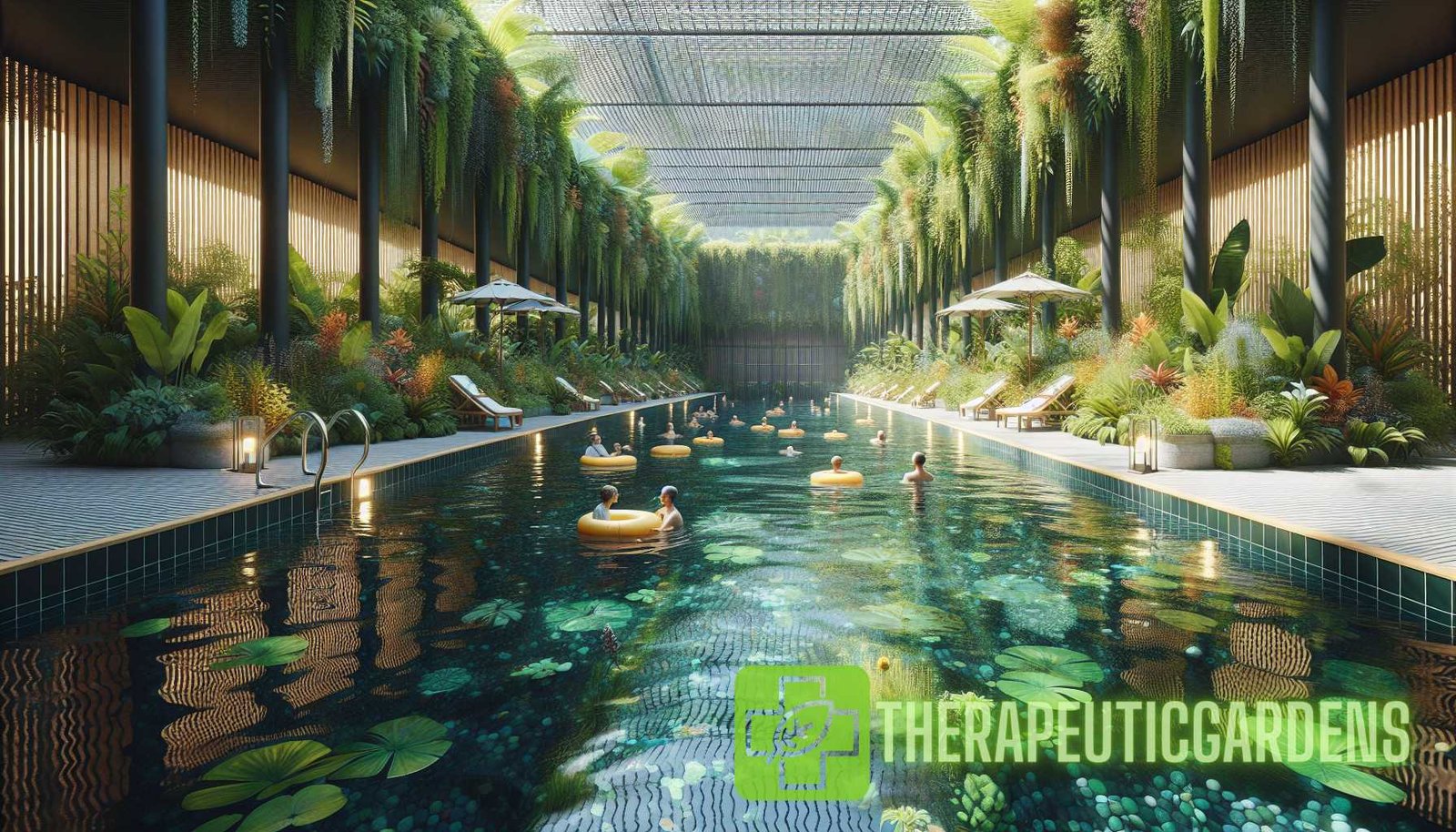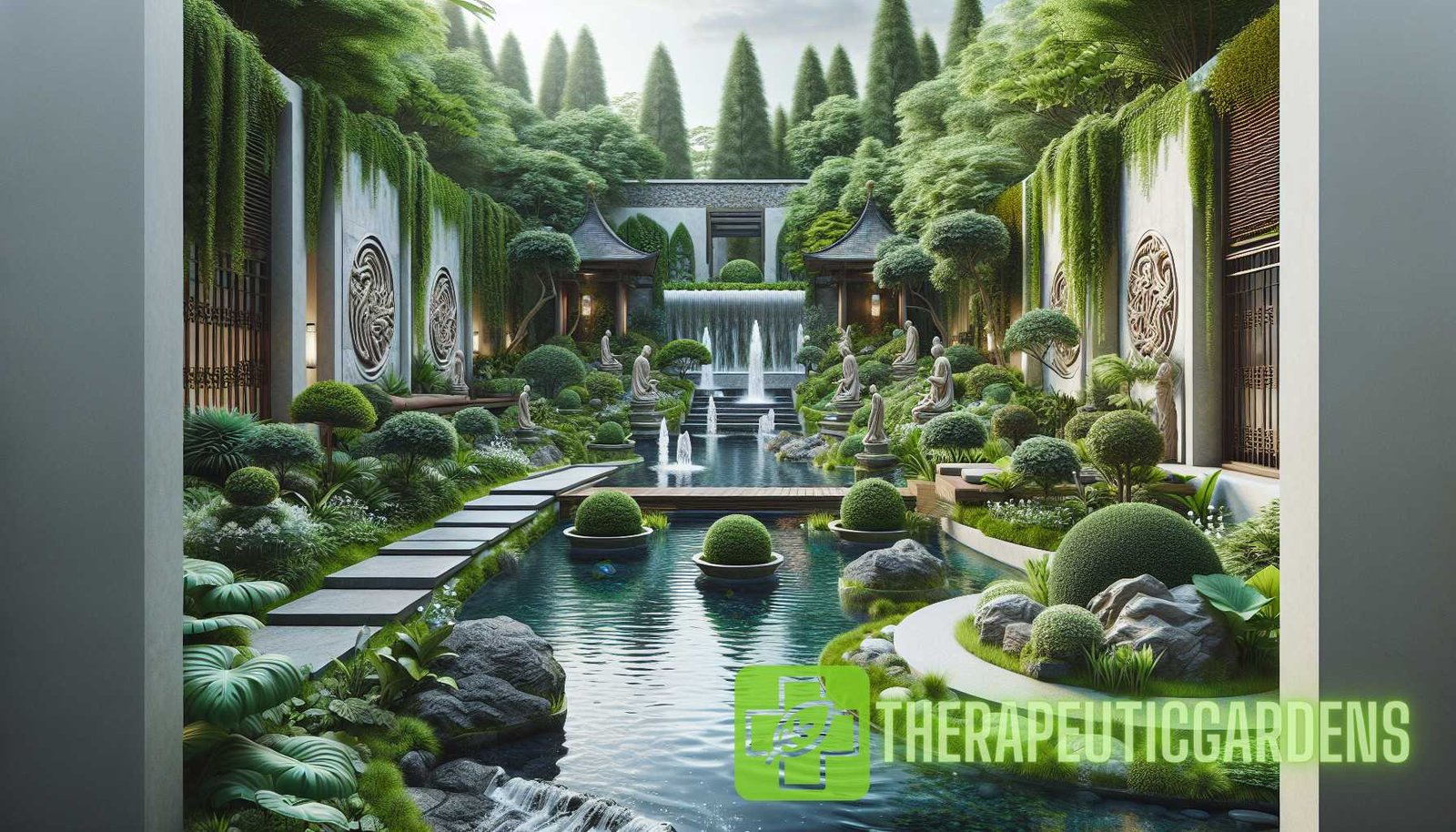The Healing Flow: Unveiling the Aquatic Phenomenon in Therapeutic Garden Design
Water has long been revered for its calming and healing properties. From ancient civilizations to modern times, people have sought solace in the soothing qualities of water. In therapeutic garden design, incorporating water features can create a serene and healing environment that promotes emotional and physical well-being. This guide explores the aquatic phenomenon in therapeutic garden design, delving into the benefits of aquatic therapy and providing insights into how water can be integrated into garden spaces to create a harmonious atmosphere.
Understanding Aquatic Therapy
Aquatic therapy, also known as water therapy or hydrotherapy, is a form of therapy that utilizes the properties of water to promote healing and rehabilitation. It involves performing exercises and activities in water, under the guidance of a trained therapist. The buoyancy and resistance of water provide a unique environment for therapy, offering numerous benefits for individuals with physical, mental, and emotional conditions.
Benefits of Aquatic Therapy:
- Reduced pain and inflammation
- Increased range of motion and flexibility
- Improved muscle strength and endurance
- Enhanced balance and coordination
- Stress relief and relaxation
- Improved cardiovascular fitness
- Enhanced mood and mental well-being
Aquatic therapy is particularly beneficial for individuals with conditions such as arthritis, chronic pain, neurological disorders, orthopedic injuries, and mental health issues. The therapeutic effects of water can help alleviate symptoms, improve functional abilities, and enhance overall quality of life.
Water in Therapeutic Garden Design
Integrating water features into therapeutic garden design can enhance the healing atmosphere and create a sense of tranquility. The gentle movement and soothing sound of water can promote relaxation, reduce stress, and stimulate the senses. Whether it’s a small pond, a cascading waterfall, or a flowing stream, water can be a central element in creating a therapeutic outdoor space.
Benefits of Water in Therapeutic Garden Design:
- Stress reduction and relaxation
- Sensory stimulation
- Aesthetic appeal
- Improved air quality through evaporation
- Enhanced biodiversity
- Opportunity for aquatic therapy

Water features can be integrated into various garden elements, such as pathways, seating areas, and plant beds, to create a harmonious flow throughout the space. The design should consider the therapeutic goals, safety requirements, and accessibility for individuals with different abilities.
Elements of Water in Therapeutic Gardens
To create an effective and healing aquatic environment in therapeutic gardens, various elements can be incorporated:
Ponds and Water Gardens
Ponds and water gardens provide a tranquil focal point in therapeutic garden design. They can house aquatic plants, fish, and other water life, enhancing biodiversity and creating visual interest. The calming reflection of the water surface and the gentle movement of aquatic plants can promote relaxation and sensory stimulation.
Waterfalls and Cascades
The sound of flowing water can have a profound effect on mental and emotional well-being. Waterfalls and cascades not only create a soothing auditory experience but also contribute to the visual appeal of the garden. The sight of water flowing over rocks and splashing into a pool can evoke a sense of tranquility and serenity.
Streams and Rills
Streams and rills can be integrated into garden spaces to create a dynamic flow of water. They can act as visual guides, leading individuals through the garden and creating a sense of movement. The sound of flowing water can provide a calming and grounding effect, promoting relaxation and contemplation.
Fountains and Jets
Fountains and jets can add an element of playfulness and sensory stimulation to therapeutic garden design. The sight and sound of water shooting into the air can engage the senses and create a focal point within the space. Water jets can also be used for hydrotherapy sessions, allowing individuals to experience the therapeutic benefits of water directly.
Design Considerations for Aquatic Therapy Gardens
When designing aquatic therapy gardens, several considerations should be taken into account to ensure a safe and effective environment:
Accessibility
The garden should be accessible to individuals with disabilities or limited mobility. Wheelchair ramps, handrails, and non-slip surfaces should be incorporated to facilitate ease of movement. Pathways should be wide enough to accommodate wheelchairs and mobility aids.

Safety
Safety features such as barriers, fences, and lifeguards (if applicable) should be included to ensure the well-being of individuals using the aquatic therapy garden. Non-slip surfaces and shallow areas should be provided to prevent accidents or injuries.
Plant Selection
The selection of plants should consider the needs of individuals who might have allergies or sensitivities. Non-toxic and hypoallergenic plants are recommended to create a safe and inclusive environment. Aquatic plants, such as water lilies and water irises, can add beauty and promote biodiversity in water features.
Therapeutic Spaces
Designated spaces should be created within the garden for therapy sessions, relaxation, and contemplation. Seating areas, shade structures, and privacy screens can provide a comfortable and private space for individuals to engage in therapy activities.
Aquatic Therapy and Mental Health
Aquatic therapy can have significant benefits for mental health and emotional well-being. The combination of water’s soothing properties, sensory stimulation, and physical activity can contribute to improved mood, reduced anxiety, and a sense of calmness. Research has shown that aquatic therapy can be effective in treating conditions such as depression, anxiety disorders, and post-traumatic stress disorder (PTSD).
The presence of water in therapeutic garden design can also have a positive impact on mental health. The serene and nurturing environment created by water features can provide a sense of comfort and peace, enhancing relaxation and emotional well-being. Water has been found to have a therapeutic effect on stress reduction and can evoke positive emotions through its association with natural landscapes.
Aquatic Therapy in Urban Healing Gardens
Urban healing gardens are specifically designed to promote health and well-being in urban environments. Incorporating aquatic therapy elements into these gardens can bring the benefits of water to individuals who might not have easy access to natural bodies of water. Water features can serve as focal points in urban healing gardens, providing an oasis of serenity in bustling city settings.
Urban healing gardens often have space constraints, making it important to select water features that can be accommodated within the available area. Compact ponds, wall fountains, and vertical waterfalls can be used to create a sense of tranquility and connection with nature in urban settings.
Conclusion
The healing flow of water in therapeutic garden design offers a multitude of benefits for individuals seeking solace and healing. Aquatic therapy, combined with the presence of water features in garden spaces, can create a harmonious and soothing environment that promotes emotional and physical well-being.
By understanding the benefits of aquatic therapy and incorporating water elements in therapeutic garden design, individuals can experience the healing power of water, even in urban environments. Whether it’s the gentle movement of a pond, the sound of a waterfall, or the flow of a stream, water can bring serenity and rejuvenation to individuals seeking respite from the stresses of daily life.
Ready to create your own therapeutic garden? Check out our guide on incorporating water serenity and explore the benefits of urban healing gardens for more inspiration!



